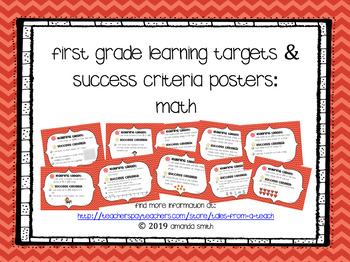First Grade Learning Targets & Success Criteria Posters: Math
- Zip
What educators are saying
Description
This 26-page resource contains “I Can” statements for the first grade Common Core and success criteria. “I Can” standards are the common core math standards presented in a kid friendly format. Success criteria helps students analyze their own knowledge and ability to see whether they are meeting the standards.
Use these to help students understand the new common core second grade standards.
This file includes a non-editable with clipart and an editable file WITHOUT clipart. The editable file includes one extra page with titles included but no other text, in the event you want to divide a standard into smaller sections or alter a standard in any other way.
This version DOES NOT include a black and white version. It includes a color version ONLY.
Click below for links to similar items:





